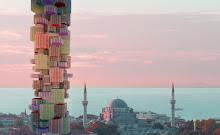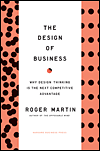 When you are a minority of sorts, let alone a person of mixed-race, it is not very often that you see someone who looks like you in television shows, commercials, movies, magazine covers. In fact there is such a small group that there are numerous websites that keep track of mixed race celebrities or models. This is nothing new. What is new however, is that this finally changing.
When you are a minority of sorts, let alone a person of mixed-race, it is not very often that you see someone who looks like you in television shows, commercials, movies, magazine covers. In fact there is such a small group that there are numerous websites that keep track of mixed race celebrities or models. This is nothing new. What is new however, is that this finally changing.
In the fall of last year, Time Magazine released a special Style & Design issue. In this specific issue was an article titled "Color Lines on The Catwalk." This article explored the rise of Asian models in high fashion. Last year, for the first time in its 27 year history, an Asian woman won the Ford Supermodel of the World competition. Up until the recent success of this South Korean woman, Asian models were only used in high fashion, when designers wanted to introduce a geisha theme. While there has always been a limited or sporadic use of Asian models in fashion spreads, it is not until now with the rise of China's economic power that impetus and momentum are building. With China and Japan being two of the world's largest economies, designers, advertising and public relation firms are taking note. There is finally an acknowledgment of world's diversity.
Du Juan, a 21-year old ballerina from Shanghai (see image above) was the first Asian woman to grace the cover of French Vogue. Up until that point, there was the blind assumption in the west that Caucasian features were the ideal and so regardless of where a certain product was marketed, the same white models were used. This same assumption however, has been rather predominant in many Asian societies. Skin bleaches and operations to create creases in eyelids, thinner noses are very popular in many Asian countries. In Singapore, Western models are used 73% of the time in advertisements; 50% in Taiwan. (I think it is due to a less conscious lingering effect of colonialism). However, with rising economic power, influence and confidence there is a cultural shift. More Asian women want to see themselves and their features represented as beautiful. Not only is there an increased appreciation for diversity, there is a demand for it and a backlash when that is ignored.
 This new push towards the importance of diversity in representation just got a very powerful poster-man on January 20th, 2009. His extended family is very reflective of the growing diversity within the United States and the increased interaction between countries and cultures through travel, immigration and the global economy. In one fell swoop, Barack Obama, the most powerful man on earth, has challenged the white dominance of predecessors in his role. In the New York Times article, "Nation's Many Faces in Extended First Family," by Jodi Kantor, she writes that Obama's family is black, white and Asian and Christian, Muslim and Jewish. According to Maya Soetoro-Ng, Obama's younger sister, "Our family is new in terms of the White House, but I don't think it is new in terms if the country."
This new push towards the importance of diversity in representation just got a very powerful poster-man on January 20th, 2009. His extended family is very reflective of the growing diversity within the United States and the increased interaction between countries and cultures through travel, immigration and the global economy. In one fell swoop, Barack Obama, the most powerful man on earth, has challenged the white dominance of predecessors in his role. In the New York Times article, "Nation's Many Faces in Extended First Family," by Jodi Kantor, she writes that Obama's family is black, white and Asian and Christian, Muslim and Jewish. According to Maya Soetoro-Ng, Obama's younger sister, "Our family is new in terms of the White House, but I don't think it is new in terms if the country."
I have always heard that beauty is in the eye of the beholder - well I think it is time the giant media conglomerates finally grasped that beholder also comes from all cultures and colors.
1.25.2009
Realizing Diversity
Subscribe to:
Post Comments (Atom)





























No comments:
Post a Comment